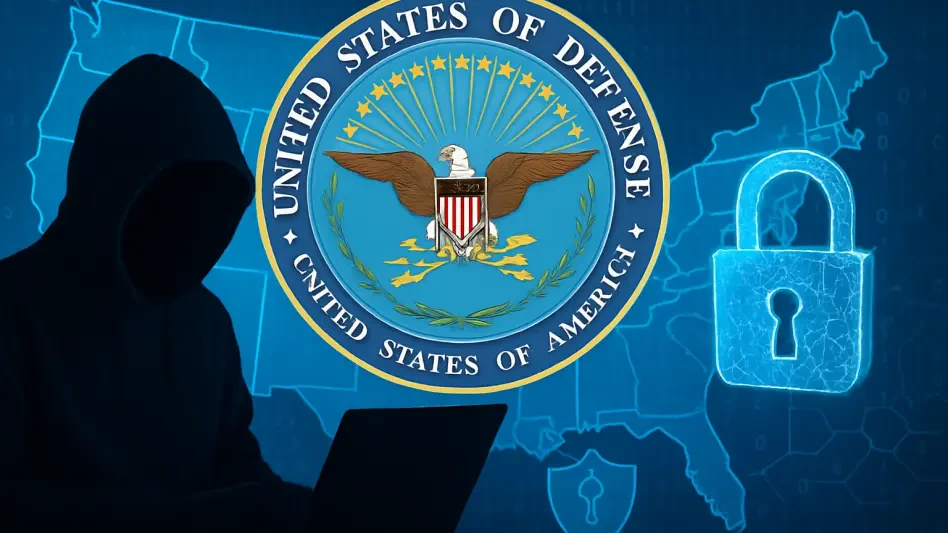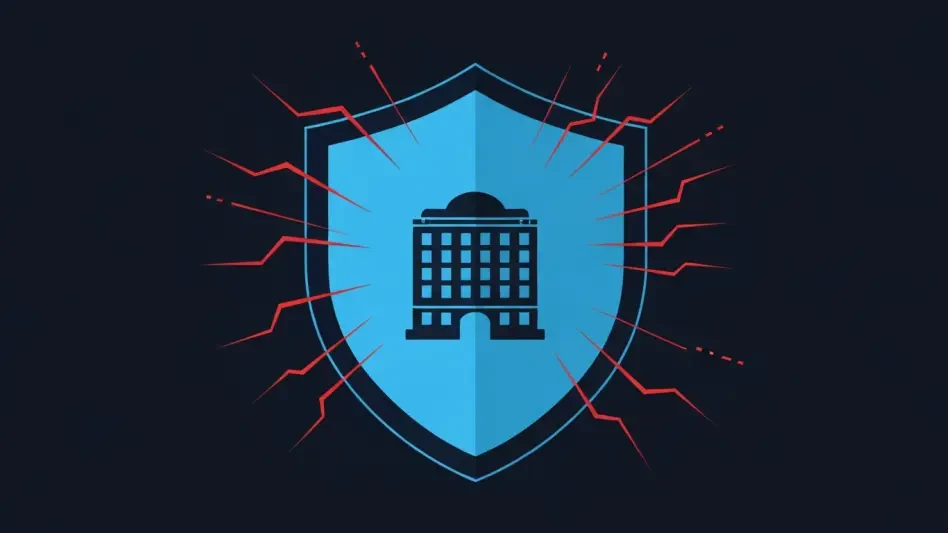In a landscape where cyber threats loom larger than ever, the U.S. Department of Defense (DoD) has unveiled a transformative final rule for the Cybersecurity Maturity Model Certification (CMMC) Program, accompanied by critical updates to the Defense Federal Acquisition Regulation Supplement (DFARS). Effective from November 10, 2025, this regulation marks a significant turning point for the defense industrial base, prioritizing the protection of sensitive data like Federal Contract Information (FCI) and Controlled Unclassified Information (CUI). For contractors and subcontractors, the days of self-attesting to cybersecurity compliance are over, replaced by a rigorous system of mandatory assessments. This shift signals a broader recognition that safeguarding national security demands more than just promises—it requires verifiable action. As cyber adversaries increasingly target the supply chain, the DoD’s latest move underscores an urgent need to fortify defenses, setting a new standard for anyone seeking to do business with the federal government. The implications are vast, reshaping how contractors approach security and compliance in a high-stakes environment.
Decoding the CMMC Structure
Exploring the Tiered Certification Levels
The CMMC Program introduces a structured framework with four distinct certification levels, each designed to align with the type of data handled and the associated risk. At the foundational Level 1, contractors dealing with FCI must conduct a self-assessment to meet 15 basic safeguarding requirements as outlined in federal regulations. Moving up, Level 2 addresses CUI with two pathways: a self-assessment or a third-party evaluation by a Certified Third-Party Assessor Organization (C3PAO), both adhering to 110 security controls from NIST SP 800-171. The most stringent, Level 3, targets high-risk contracts involving CUI, requiring a government-led assessment by the Defense Industrial Base Cybersecurity Assessment Center (DIBCAC) on top of enhanced NIST SP 800-172 controls. This tiered system ensures that the level of scrutiny matches the sensitivity of the information, providing a clear roadmap for compliance based on contract-specific needs.
A notable aspect of these levels is the flexibility offered through conditional certification at Levels 2 and 3. Contractors not yet fully compliant can secure a temporary status if they have a Plan of Action and Milestones (POA&M) to address gaps within 180 days. This provision acts as a bridge for those still building their cybersecurity capabilities, allowing them to bid on contracts while committing to full compliance. Program offices hold the authority to determine the appropriate CMMC level for each contract, factoring in mission criticality and potential impacts of data breaches. Such an approach balances the immediate need for security with the practical challenges contractors face during transition, ensuring that the framework remains adaptable yet firm in its protective goals.
Integration with Established Standards
The CMMC framework doesn’t emerge in isolation but builds on existing cybersecurity standards, offering a sense of continuity for seasoned contractors. It incorporates familiar benchmarks like NIST SP 800-171 and SP 800-172, alongside longstanding Federal Acquisition Regulation (FAR) and DFARS clauses. For many in the defense sector, this means the new requirements are less about starting from scratch and more about elevating current practices to meet heightened expectations. The alignment with established guidelines ensures that contractors can leverage prior investments in security infrastructure, though the bar for verification through external assessments introduces a significant shift from previous self-reliant models.
Beyond technical standards, the integration extends to how cybersecurity is woven into the fabric of federal contracting processes. Compliance under CMMC is not a peripheral concern but a core criterion for eligibility, tracked meticulously through the Supplier Performance Risk System (SPRS). Contracting officers will rely on this system to evaluate a contractor’s standing, making it imperative for businesses to maintain accurate and up-to-date records. This seamless connection between certification levels and procurement decisions highlights the DoD’s intent to make cybersecurity a non-negotiable pillar of defense contracts, ensuring that every player in the supply chain upholds a baseline of protection against evolving threats.
Navigating DFARS Amendments and Obligations
Updates to Compliance Timelines and Scope
Significant updates to DFARS, effective as of November 10, 2025, embed CMMC requirements directly into the contractual framework, altering how compliance is measured and enforced. Unlike earlier rules that focused on certification at the bidding stage, the new mandate requires contractors to demonstrate compliance at the time of award and sustain it throughout the contract’s duration, including any option periods or extensions. This continuous obligation ensures that cybersecurity remains a priority from start to finish, preventing lapses that could jeopardize sensitive data during long-term engagements. The emphasis on ongoing adherence reflects a broader shift toward accountability in defense contracting.
Additionally, the scope of these requirements has been carefully defined to apply only to information systems that process, store, or transmit FCI or CUI, sparing unrelated operations from unnecessary regulatory burden. This targeted approach helps contractors focus their resources on critical areas, avoiding overreach into systems irrelevant to DoD contracts. During the phase-in period from 2025 to November 9, 2028, program offices retain discretion over applying specific CMMC levels, offering some flexibility as the industry adapts. However, once the deadline passes, every relevant contract will mandate a designated level, signaling a firm end to the transition window and a uniform standard across the board for cybersecurity expectations.
Extending Compliance Through the Supply Chain
Prime contractors face an added layer of responsibility under the updated DFARS provisions, as they must ensure that subcontractors handling FCI or CUI meet the applicable CMMC levels. This flow-down requirement creates a comprehensive network of accountability, ensuring that no link in the supply chain becomes a vulnerability. For primes, this means not only achieving their own certification but also actively monitoring and enforcing compliance among their partners, a task that could prove complex given the diverse capabilities of subcontractors across the industry.
The ripple effect of this mandate underscores the interconnected nature of defense contracting, where a single weak point can compromise an entire operation. Subcontractors, regardless of size or role, are now under the same scrutiny as their prime counterparts when it comes to protecting sensitive information. This shared burden aims to fortify the entire ecosystem against cyber threats, which often exploit smaller or less-prepared entities as entry points. As a result, collaboration and transparency between primes and subs become essential, fostering a collective commitment to security that aligns with the DoD’s overarching goal of safeguarding national interests through robust data protection.
Assessing the Broader Impact on the Industry
Weighing Risks Against Strategic Advantages
Noncompliance with the CMMC rule carries severe consequences for defense contractors, potentially derailing their ability to secure DoD contracts or exposing them to legal repercussions under statutes like the False Claims Act. Failure to meet the required certification levels or misrepresenting cybersecurity status could lead to contract terminations, negative performance evaluations, and significant financial penalties. In an era where the DoD is intensifying enforcement—bolstered by initiatives such as the Department of Justice’s Civil Cyber Fraud Initiative—the risks of falling short are not merely operational but existential for businesses reliant on government work. The stakes are unmistakably high in this security-first landscape.
On the flip side, contractors who proactively embrace the CMMC framework stand to gain a competitive edge in the federal procurement arena. By investing in robust cybersecurity infrastructure and securing certifications ahead of deadlines, businesses can position themselves as trusted partners to the DoD, distinguishing themselves in a crowded market. Continuous compliance, monitored through SPRS, transforms cybersecurity from a mere requirement into a strategic asset, demonstrating reliability and commitment to potential clients. For those willing to adapt, the new rule offers an opportunity to build long-term credibility while contributing to the broader mission of protecting critical national defense data.
Addressing Challenges While Prioritizing Security
The urgency to counter escalating cyber threats underpins the DoD’s push for the CMMC rule, reflecting a national security imperative to protect the defense supply chain from sophisticated adversaries. However, the transition to mandatory certifications and third-party assessments poses significant challenges, particularly for small businesses and new entrants to federal contracting. The cost of compliance, coupled with the complexity of aligning with multiple certification levels, may strain resources and test operational resilience. Despite these hurdles, the phased implementation through 2028 and options for conditional certification provide a measure of relief, acknowledging the diverse starting points within the industry.
Balancing this practical reality with the non-negotiable need for security remains a central theme of the regulation. The DoD’s firm stance—evident in the prioritization of protection over convenience despite public feedback on cost and timelines—signals that data breaches are a risk too grave to ignore. For contractors, adapting to this environment requires not just technical upgrades but a cultural shift, embedding cybersecurity into every facet of operations. As the regulatory landscape continues to evolve, with proposed FAR updates aiming to clarify distinctions between FCI and CUI, staying agile and informed will be crucial. Ultimately, the path forward demands a commitment to resilience, ensuring that security enhancements keep pace with the ever-changing nature of cyber risks.
Reflecting on a New Era of Cybersecurity Standards
Lessons Learned from a Pivotal Shift
Looking back, the rollout of the DoD’s final CMMC rule and DFARS updates on November 10, 2025, marked a defining moment for the defense industrial base, cementing cybersecurity as a cornerstone of federal contracting. The move away from self-attestation to mandatory, verifiable assessments addressed long-standing vulnerabilities, ensuring that sensitive data like FCI and CUI received the protection they demanded. This transition, though challenging, highlighted the critical need for accountability in an age where cyber threats targeted even the smallest players in the supply chain. The tiered certification structure and phased implementation stood as pragmatic solutions, tailored to balance immediate security needs with the realities of industry adaptation.
Charting the Path Ahead for Contractors
As the dust settled on this regulatory overhaul, the next steps for defense contractors became clear: proactive preparation was non-negotiable. Businesses needed to assess their current cybersecurity posture against CMMC levels, invest in necessary upgrades, and ensure accurate SPRS data to maintain eligibility for DoD contracts. Engaging with third-party assessors or preparing for government reviews emerged as vital actions, particularly for those handling high-risk data. Additionally, fostering compliance down the supply chain through robust partnerships with subcontractors offered a way to mitigate risks collectively. By viewing cybersecurity as an ongoing journey rather than a static goal, contractors could not only meet these stringent standards but also strengthen their role in safeguarding national defense for the long haul.








